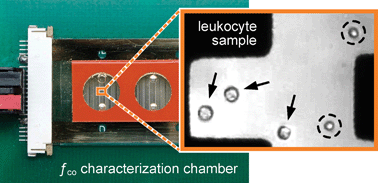Dielectric characterization of complete mononuclear and polymorphonuclear blood cell subpopulations for label-free discrimination
Abstract

Maintenance work is planned for Wednesday 1st May 2024 from 9:00am to 11:00am (BST).
During this time, the performance of our website may be affected - searches may run slowly and some pages may be temporarily unavailable. If this happens, please try refreshing your web browser or try waiting two to three minutes before trying again.
We apologise for any inconvenience this might cause and thank you for your patience.
* Corresponding authors
a
Department of Molecular Pathology, The University of Texas M. D. Anderson Cancer Center, Houston, Texas 77054, USA
E-mail:
jvykouka@mdanderson.org
Fax: 713-834-6105
Tel: 713-834-6095

 Please wait while we load your content...
Something went wrong. Try again?
Please wait while we load your content...
Something went wrong. Try again?
 Fetching data from CrossRef.
Fetching data from CrossRef.
This may take some time to load.
Loading related content
